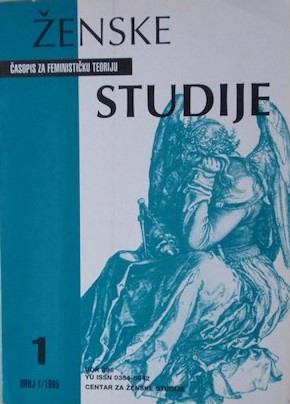Jezik i pol (I) Istraživanja u svetu
LANGUAGE AND SEX
Author(s): Svenka SavićSubject(s): Gender Studies, Sociology of Culture
Published by: Centar za ženske studije & Centar za studije roda i politike, Fakultet političkih nauka, Beograd
Keywords: language; discourse; discourse analysis; structuralism; conversation
Summary/Abstract: Basic lines of research in the field of sex and language are presented and theoretic directions are pointed to. Since the beginning of the seventies, women’s liberation movement has initiated intensive research into the interdependence of sex, language, and society. A discussion, more intensive, and framed within an improved theoretical basis is going on about the interdependence of language structure and those using it. A whole series of questions have been put on the agenda by different types of research: Do a man and a woman speak in different ways? How does their sex influence their verbal behaviour? What is the relation between the structure and the use of language regarding the sex of the speaker? A great number of works in which language structure is analysed have shown that language use is ’sexist’: women are ignored and belittled by means of words and expressions such as title terms or terms denoting women’s professions, etc. A new perspective has been opened by the research into the interrelationship of sex and language in discourse analysis. In the early seventies, works were published which were trying to prove that there was a difference between a man’s and a woman’s way of leading a conversation, a difference as to pronunciation, intonation, melody, tone of voice (a woman’s voice being softer, for instance), difference as to syntactic organization, etc. Many differences have in fact been stated at each language level. Research results can be grouped around two basic interpretations. According to one, what we have is the so-called women’s language and, according to the other, we have some kind of genderlect within a given language. In both cases, differences, and not similarities between the sexes as regards language, are stressed; the first case, considers a different language and the second, only partial a departure from the so-called norm of men’s language. After extensive research into the phonological, morphological, and lexical systems, by which differences in men’s and women’s language behaviour were being investigated only two proved to be valid: the first is related to the phonetic differences - in many languages, women’s pronunciation is more correct than men’s; and the second is that there is more variety in women’s intonation and accenting. No consistent differences were found in the vocabulary. Estimating the researches of the seventies, P. M. Smith (1979, 115-117) concludes that it is not enough to compare language features to the speaker’s sex, but it is necessary to take into account simultaneously all other variables such as age, or the social group to which the speaker belongs. We should not talk of women’s stereotypes in speech, but rather about stereotype activities that women take part in, for their speech reflects the permanence of the stereotypes. Since the early seventies, there has accrued a change of perspective in the research of the language and sex phenomenon. The speech of an individual is viewed as action, or activity, and as an undividable part of the mechanism of social life. Interconnection with the social differences between men and women, as well as with different division of labor, and with the male domination is also pointed out. On examples seemingly quite marginal, conversational differences between men and women are effectively shown. Women have certain strategies how to maintain their turns in speech. The question arises: if women are differently socialized in their conversational role, when does that process begin? Therefore, some of the research is devoted to the acquisition of discourse features in children of different ages, and within those, different language socialization of boys and girls from the same social groups is proved. The conclusion states that each of the offered theoretic approaches puts light just on one part of empirical material. At the moment, discourse analysis is confirmed as the approach that looks at language use as an activity and makes it possible to see in which way discourse helps to build the edifice of social life. This survey leaves out some interesting studies in psychology and neurolinguistics.
Journal: Ženske studije : časopis za feminističku teoriju
- Issue Year: 1995
- Issue No: 1
- Page Range: 197-209
- Page Count: 13
- Language: Serbian

